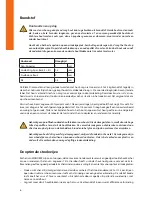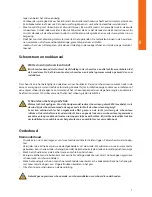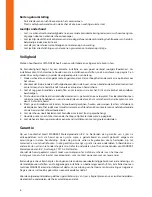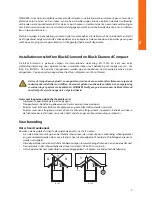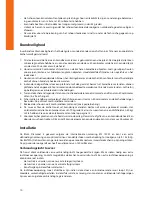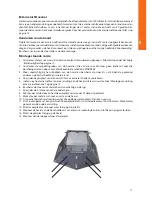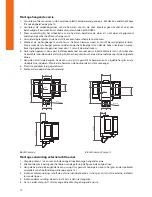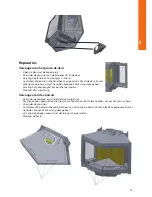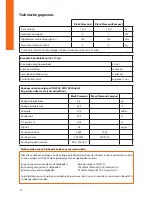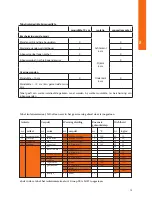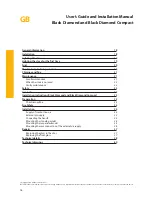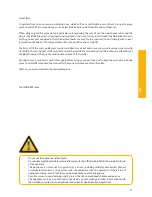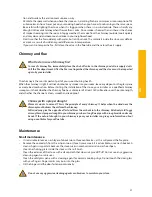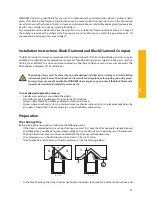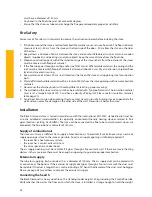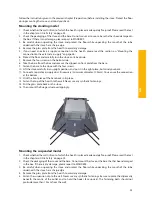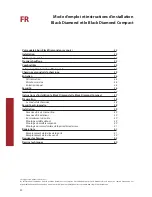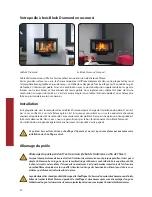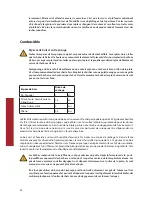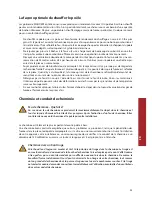
20
Fuel
Wood species and storage
You can use all kinds of woods as fuel as long as it is clean, split and dry. Hardwood like oak, beech and
birch burn slowly, give off much heat and form charcoal easily. Softer woods like spruce, fir and poplar
give more flames but less heat and less charcoal.
The best place to store timber is in a windy spot but sheltered from the rain. This is how the logs can
dry in a natural way. Pile the logs on an old pallet or a frame to let the wood dry from underneath and
to prevent the lower logs from being in contact with water.
Wood species
Drying time
Fir, Poplar
1
year
Lime, Willow, Spruce, Birch,
Ash, Alder
1,5
years
Fruit trees, Beech
2
years
Oak
2,5
years
The Black Diamond only burns on wood. Do not put more than 3 to 4 kg of fuel in the stove at the time. Always
use clean and cut logs, which have sufficiently dried. Please see the above list for drying times. Wet wood does
not burn well and gives heavy smoke emission. It may blacken the glass pane of your stove with soot and build
up smut in the flue pipe. This may increase the risk of chimney fire.
Fresh, moist wood contains about 50% moisture. Cleaved wood still contains 20% moisture after drying it for
a year and moisture percentage will be decreased to 12 to 15% after drying it for two years. Dry wood gives
nice flames and little or no smoke, and the fire will crackle when burning. Wet wood makes a hissing sound,
gives much smoke and only small flames which will considerably dampen the pleasure of burning your stove
and the heat output.
Do not put any paraffin-containing logs in your stove. When the door is closed, the high heat will
melt the paraffin from the logs too quickly. The polluted flue gasses which consequently develop will
deposit on and burn in the glass of your stove and cannot be removed later.
Do not use any wood that is painted, impregnated, glued together or processed in any other way. The
flue gases are very harmful to the environment and may affect your stove. It is also prohibited to burn
plastics and other waste matter due to poisonous smoke development.
The best way to burn your stove
All WANDERS’ stoves are designed so that they give a maximum output. A well-lit wood-burning stove can
produce a yield of about 75%. This means that you need less wood for the same amount of heat. Moreover, a
well-lit stove produces less smoke pollution. Below are a few tips to give you optimum pleasure:
•
Always burn your stove with its door closed; this will improve the output within 8 to 10 times. When the
door of the stove is open, the chimney will draw more air than is needed for proper combustion. The rela-
tively cold air will cool the fire. It will also preclude fire damage by any sputtering sparks, especially from
softwood.
•
Do not put more than 3 logs on the fire at one time. Too much fuel at one time thwarts efficient combus-
!
!

